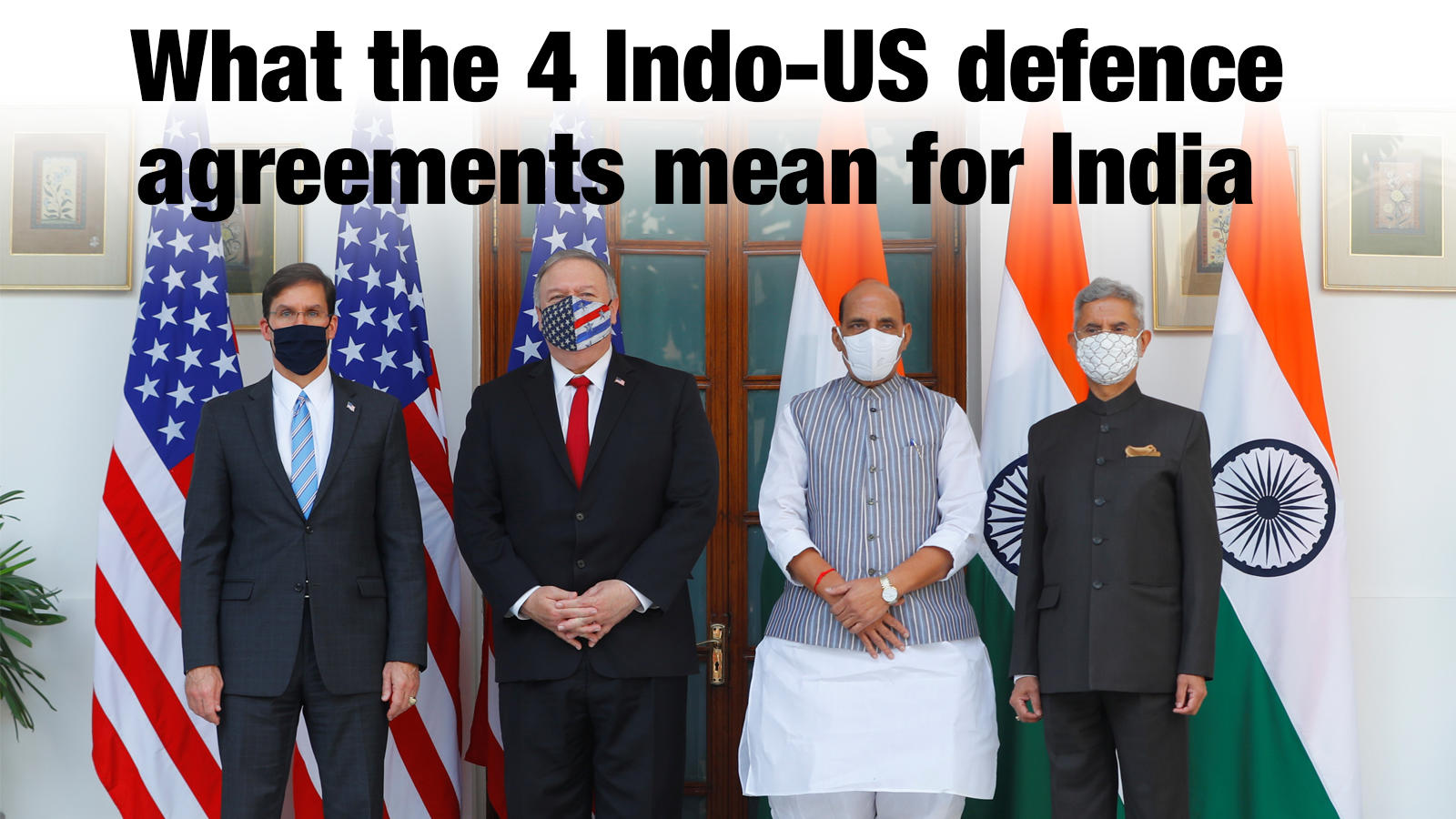
SOURCE: TNN
India and the US inked the long-pending Basic Exchange and Cooperation Agreement (BECA) — a key military pact on geo-spatial cooperation during the recently concluded ‘2+2’ Indo-US Talks on October 27. With this, the two countries now have four agreements that cover areas of military information, logistics exchange, compatibility, and security between them.
All of them are foundational defence pacts that a country needs to sign to enter into a kind of military alliance and obtain leading-edge weapons and communications systems from the US. This is what each one entails…
BECA
Signed in 2020
The most recent one, it was signed when US Secretary of State Mike Pompeo and Defence Secretary Mark T Esper were in India for the third edition of the 2+2 dialogue between the two countries. The Basic Exchange and Cooperation Agreement (BECA) provides for real-time exchange of geo-spatial intelligence through advanced satellite imagery, topographical and aeronautical digital data for long-range navigation and pinpointed strikes against enemy targets.
With this, the US military will provide advanced navigational aids and avionics on US-supplied aircraft to India. Which means, Indian military will have access to sophisticated GPS which will allow it to use its ballistic and
cruise missiles, drones and other weapons with pin-point accuracy.
While the US has been providing military intelligence to India during the current crisis on the China border, like it did during the 73-day military confrontation at Doklam in 2017, BECA will further smoothen the process.
The agreement also serves as an important precursor to India acquiring armed unmanned aerial vehicles such as the Predator-B from the US. There will also be provisions for sharing classified information like sensitive satellite and sensor data.
BECA will facilitate exchange of real-time geospatial information between India and US for both military and civilian use. The new agreement follows the COMCASA information-sharing pact signed in 2018 and the military logistics pact LEMOA in 2016
COMCASA
Signed in 2018
COMCASA or Communications Compatibility and Security Agreement, was signed in 2018 with the intention of getting Indian military critical and encrypted defence technologies from the US.
The agreement provides the legal framework for the US to part with its sensitive communication equipment and codes to enable transfer of real time operational information. This equipment is largely used for ground-to-air communication, on installed US-origin military aircraft, to enable best battle situation awareness.
The US data link is considered the most secure communication platform, and the agreement allows India access to American intelligence data, including real-time imagery. It also allows both sides to operate on the same communication systems, enabling an “interoperable” environment for militaries.
Effectively, COMCASA, means India sharing the real-time American intelligence on military deployments by China and Pakistan. COMCASA also allows India to obtain the armed version of the Sea Guardian drones.
Earlier, India also had to depend on commercially available less secure systems on, otherwise, high-end platforms like C-130Js and the P8I maritime surveillance aircraft, among others. COMCASA changed that.
LEMOA
Signed in 2016
LEMOA, or Logistics Exchange Memorandum of Agreement (LEMOA), a tweaked India-specific version of the Logistics Support Agreement (LSA), was the first ‘foundational agreement’ signed by India and the US in 2016. LEMOA facilitates the provision of logistical support, supplies, and services between the US and Indian militaries on a reimbursable basis and provides a framework to govern them.
It helps both countries in governing the use of each other’s land, air and naval bases for repair and resupply — a step toward defence ties to counter the growing maritime assertiveness of China.
It facilitates regular interactions between military services and cooperation in areas of mutual interest, such as counter-terrorism, maritime security, special operations, and humanitarian assistance and disaster relief.
In the past, India had given the US ad-hoc access to its military facilities, such as, allowing refuelling of American warplanes in Mumbai during the 1991 Gulf War. Signing the pact made payments easier. With LEMOA in place, in October, US long-range maritime patrol aircraft refuelled at the Andaman and Nicobar islands, displaying the military collaboration between the two countries amid India’s standoff with China along the border in Ladakh.
LEMOA does not allow for stationing of US troops in India or setting up of US bases.
GSOMIA
Signed in 2002
The General Security of Military Information Agreement (GSOMIA) was signed by the Atal Bihari Vajpayee government back in 2002. The agreement prescribed security standards and protocols for safeguarding information shared by the Pentagon with India’s defence ministry, as well as by US defence firms with Indian defence public sector undertakings (DPSUs).
However, GSOMIA did not cover the exchange of classified information with Indian private companies.






